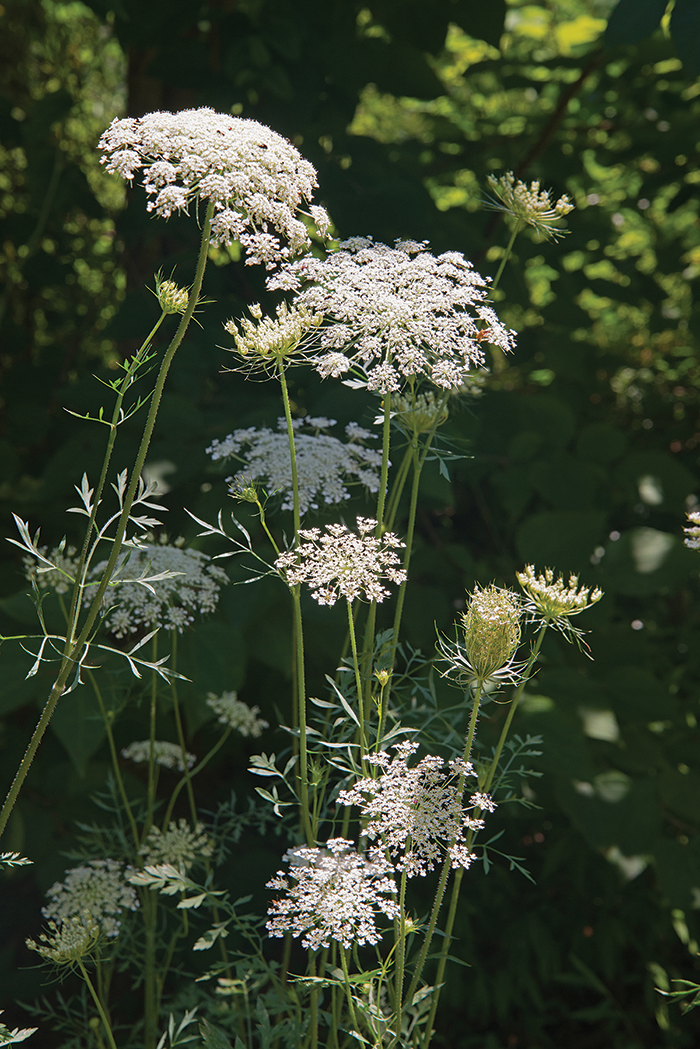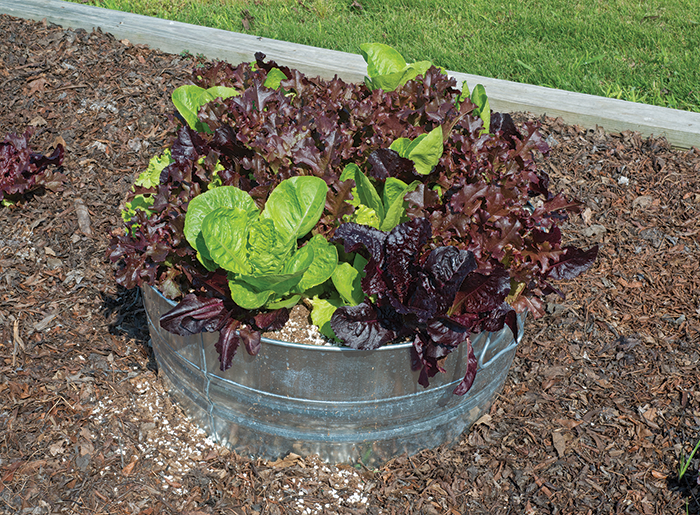It’s August, and it’s hot. It is also a time of opportunity in the ol’ veggie patch. Even with fall right around the corner, there are still plenty of growing days left to plant another round of summer vegetables, and, in spite of the heat, cool-season edibles can start to come out and play in your garden as well.
At the beginning of this month, tuck in the seeds of green beans, cucumbers and squash (both summer and winter varieties). Eggplants, okra, tomatoes and peppers can also be added, but to fudge on the time it takes them to mature, go with starter plants, which should still be available at garden centers.

Queen Anne’s Lace
If you enjoy adorning your Christmas tree with all-natural ornaments, the blooms of Queen Anne’s lace can easily be dried and used as faux snowflakes to dot evergreen branches in a seasonal wintry white.
Snip the blossoms off at their bases, leaving just a slim bit of stem on each, and place the flowers flat on a screen that is tucked away in a warm, dry place such as an attic or garage. Come the holiday season, lightly spray the dried blooms with hair spray to prevent shedding and then let it “snow” on your Christmas tree!
Sure, cold weather that could kill warm-season vegetables is on the way, but, lately, the Septembers and Octobers around here have been pretty balmy. Personally, it has been quite a few years since I got caught with my plants down by an early cold snap that nailed them before they could begin producing tasty crops.
The coming chilly times won’t bother cool-season veggies, and since most need warm soil to sprout and quickly mature, now is a good time to plant such delectables as broccoli, cabbage, Brussels sprouts, collards, turnips, carrots, spinach, onions, Swiss chard, cauliflower, radishes, mustard greens, rutabaga, lettuce and kale. Gardeners who enjoy herbal helpers in kitchens might also consider adding dill, fennel or parsley.
If you already have a vegetable garden, replacing pooped-out plants with new ones is a no-brainer. However, if you didn’t start a veggie patch this spring or don’t have room for one, grow small by adding plants to any sizeable container that has holes in the bottom for drainage. For an instant small garden, plop a bag of commercial garden soil flat on the ground, poke holes in the bottom, slice a few “X’s” in the top and add plants or seeds.
Naturally, you are going to have to deal with the hot, arid reality that is typically August and early September. Mulching around plants will help deflect excessive heat and conserve soil moisture, but if the rains don’t come on a regular basis, break out the garden hose. Maturing veggies typically need about an inch of water a week. It is best to irrigate early in the morning, so the leaves will quickly dry to lessen the chances of diseases and fungi causing problems.
In August
Next year’s herb garden starts now if you let a few of your dill, basil and chive plants go to seed. These herbs readily reseed, meaning there will likely be plenty of volunteers sprouting by the time warming temperatures signal the start of the new 2021 spring growing season.
Okra can be unpleasantly slimy when boiled, but an easy way to buck such yuck is to cook the picked pods whole. For better flavor, harvest them small — about 2 to 3 inches long will do.
Patrol the potato patch for exposed spuds. If you aren’t going to harvest them soon, cover the ’taters with mulch to prevent sunrays from turning their skins green and their taste nasty.
The bloom shows of rhododendrons and azaleas have passed their peaks now, but these pretties are currently setting new buds. To help maintain their flower power for next year, during extended dry times in late summer, keep them on a regular watering schedule.







